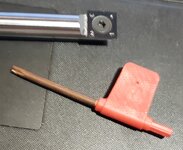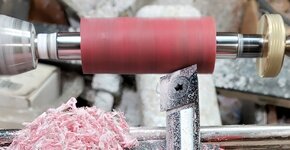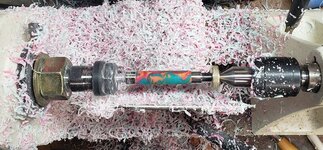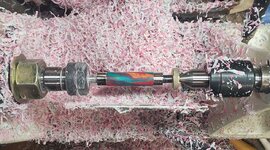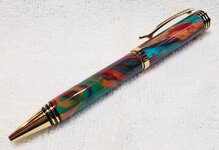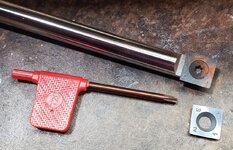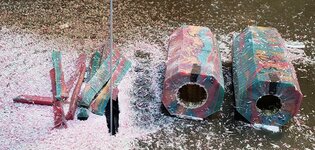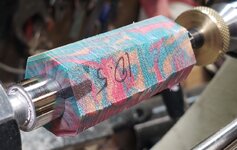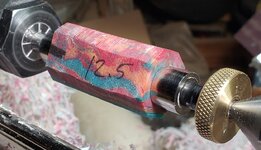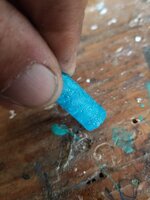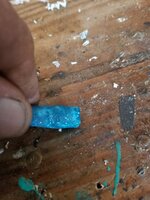My first two inlace acrylester pen blanks blew up on the lathe. I stuck with it and now I get reliable results with inlace acrylester. It can yield beautiful pens with little practice. Once you get the hang of it, you will scratch your head and ask, "Why did I think this was so challenging?"
My Secret to Success with Inlace Acrylester:
Before turning, I put the blank in a ratchet clamp with the corner edge exposed. I use the ratchet clamp as a handle to round the corner edge on the pen blank. It doesn't have to be pretty, just round off the sharp corner. Roll the blank as you round it, and pay attention to the front/back symmetry as well. It doesn't have to be perfect. Rotate the blank and reclamp, rounding each edge in turn.
CAUTION: The fine dust that results from this step is incredibly messy and has static cling is like no other. I always perform this task outside with a dust mask and have learned to set up the shop vac to capture as much dust as possible. At first, I used a hand belt sander clamped upside-down in a Workmate workbench in the backyard, until I got a benchtop belt sander. Be careful.
I use carbide and HSS steel (skew, roughing gouge, and spindle gouge). I keep working on my HSS skills, but when the going gets tough with the inlace acrylester, I reach for the carbide - round and square radius tips do best for me. It takes me three times as long to do an inlace acrylester pen as it does for wood - but I am slow, careful, and patient.
Keep the lathe speed as high as it goes, your tools sharp, and take light cuts ... but everyone always says that for every pen question I see here. Be patient; practice makes perfect!


